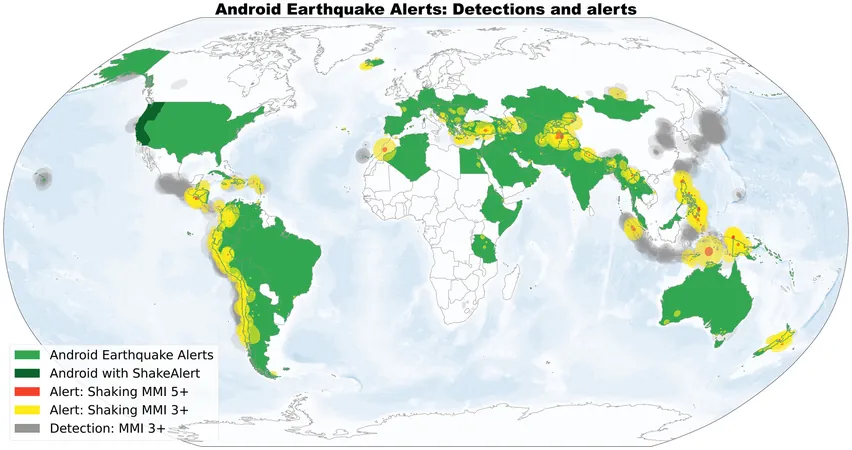
How Google's Android Earthquake Detection System Could Be a Lifesaver
2025-07-18
Author: Wei
Your Android Phone: A Lifesaving Tool in Earthquake Zones
If you live in an earthquake-prone area and carry an Android phone, your device might be your best ally during a seismic event. Since its launch in the U.S. in 2020, the Android Earthquake Alert (AEA) system has rapidly expanded globally, providing critical alerts approximately one minute before the ground begins to shake. That's potentially enough time to seek shelter or notify those around you.
Inside the Technology: How It Works
In a groundbreaking paper published in Science, Google unveiled the mechanics behind its life-saving technology. The AEA, which is embedded in most Android devices, relies on the detection of seismic waves—P waves and S waves—that travel out from an earthquake's epicenter. As soon as an Android phone senses these waves, it transmits the data along with its approximate location to Google's servers. The servers then validate the source and disseminate alerts to users, offering some individuals advanced notice before the shaking commences.
A Global Impact
From 2021 to 2024, the AEA sent alerts to millions across 98 countries. A notable instance occurred on February 6, 2023, when over half a million individuals in Turkey and Syria received warnings just before a devastating 7.8 magnitude earthquake struck. With an impressive track record of only three false alarms out of 1,279 alerts—two of which were triggered by thunderstorms—Google’s researchers gathered data that indicated 85% of alerted users reported feeling shaking.
Real-Life Experiences
Many users have shared their experiences with the system. For example, during a recent 5.5 magnitude earthquake in southern Spain, I received an alert just moments before it struck. This technology is not just theoretical; it's already demonstrating its life-saving potential.
The Future of Earthquake Detection
One of the AEA's standout features is that it operates without the need for dedicated seismic infrastructure. This makes it extremely valuable in regions lacking formal warning systems. Presently, the AEA sends about 60 alerts each month to approximately 18 million users.
Challenges and Improvements
Google's recent publication also acknowledged some of the system's shortcomings. During the catastrophic Turkey-Syria earthquake, for instance, the system underestimated its magnitude and didn’t alert everyone in a timely manner. To address these issues, engineers recalibrated the algorithm, running tests on prior quake data and discovering it could have generated 10 million actionable alerts had it been optimized.
Not a Replacement, but a Vital Supplement
It's essential to note that while Android Earthquake Alert is a powerful tool, it is not intended to replace traditional seismic detection systems. Google remains committed to improving the AEA to enhance warning times for future earthquakes, ensuring that more lives can be saved in moments of crisis.
 Brasil (PT)
Brasil (PT)
 Canada (EN)
Canada (EN)
 Chile (ES)
Chile (ES)
 Česko (CS)
Česko (CS)
 대한민국 (KO)
대한민국 (KO)
 España (ES)
España (ES)
 France (FR)
France (FR)
 Hong Kong (EN)
Hong Kong (EN)
 Italia (IT)
Italia (IT)
 日本 (JA)
日本 (JA)
 Magyarország (HU)
Magyarország (HU)
 Norge (NO)
Norge (NO)
 Polska (PL)
Polska (PL)
 Schweiz (DE)
Schweiz (DE)
 Singapore (EN)
Singapore (EN)
 Sverige (SV)
Sverige (SV)
 Suomi (FI)
Suomi (FI)
 Türkiye (TR)
Türkiye (TR)
 الإمارات العربية المتحدة (AR)
الإمارات العربية المتحدة (AR)